Well, first, an announcement: All good things must come to an end, and it was time for ACE, our long-lived Class A motor home, to find a new home. There was actually nothing seriously wrong with it, but it was 11 years old, had 70,000 miles on it, and, while motor homes require a lot of TLC, this one was requiring more TLC with each passing year and there comes a point where the effort required is greater than the benefit received.
But there’s a coda to that story. Two, actually.
The first is that the guy who purchased ACE, in an amazing act of generosity, agreed to delay delivery for two months so we could use ACE to take a 6-week, 3000-mile trip to the northeast to visit family and see Acadia National Park. More on that below.
The second is that shortly after we transferred ACE to its new owner, we bought a small’ish travel trailer, a Grand Design Imagine XLS 23LDE. Seeing as how it’s an Imagine brand, we thought Imogene would be a suitable name, “Genie” for short. That will be the subject of a future post.
Our farewell trip
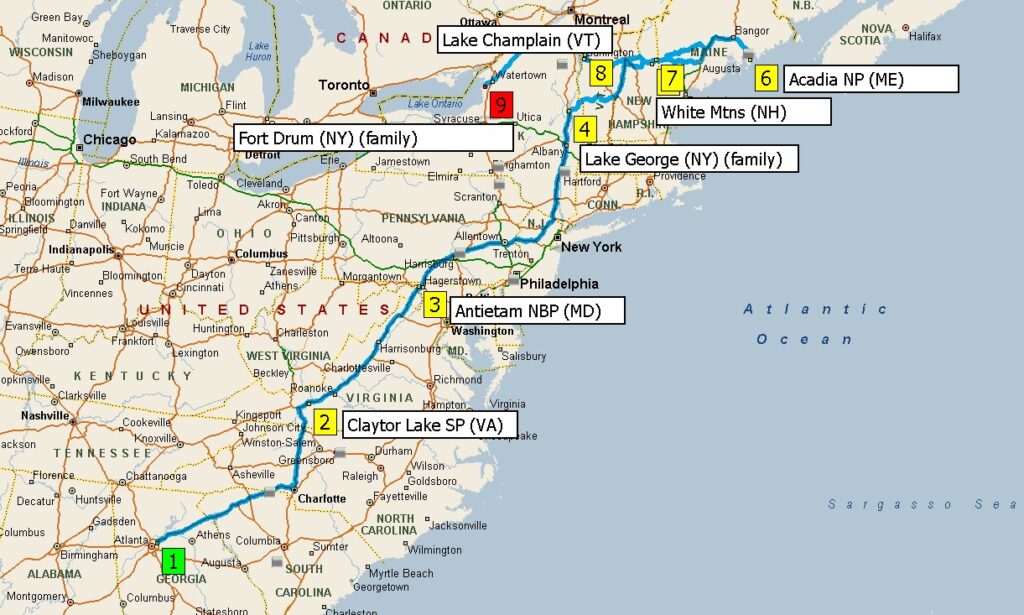
There’s lots to say about the trip, which was wonderful on all counts, but here are a few of the highlights…
Antietam National Battlefield Park
In September 1862, the Confederate Army, under Robert E. Lee, invaded Maryland in an attempt to shift the focus of the war away from the south and into Federal territory. The Confederates were met near Sharpsburg by Union forces under Major General George B. McClellan. The engagement occurred in a small area, roughly 5 miles long and no more that a couple miles wide, but what occurred there was the bloodiest day in American history: 22,000 casualties in 12 hours. The area of the fighting is preserved now as the Antietam National Battlefield Park.
And, as usual, the National Park Service has done an unbelievable job of bringing to life the history, the battle, the personalities, and the significance of that day. Most of all, NPS has set up a driving tour of the battlefield area with stops at each of the significant locations, with each stop presenting the operational ebb and flow of the engagement in a way that mimics what is known in military terms as a “staff ride.”
Just one example: Crossing the farmland was a small dirt path known to the locals as the “sunken road.” Confederate troops dug in along this road as northern troops approached. While the Confederate troops were outnumbered almost 3:1, their superior position allowed them to wreak havoc on the Union army. After 5 hours of fighting, 5500 men had been killed or wounded, and that road is now known as “Bloody Lane.” The details of what happened are accessible nowadays through an assortment of signs, maps, displays, and even an observational tower.
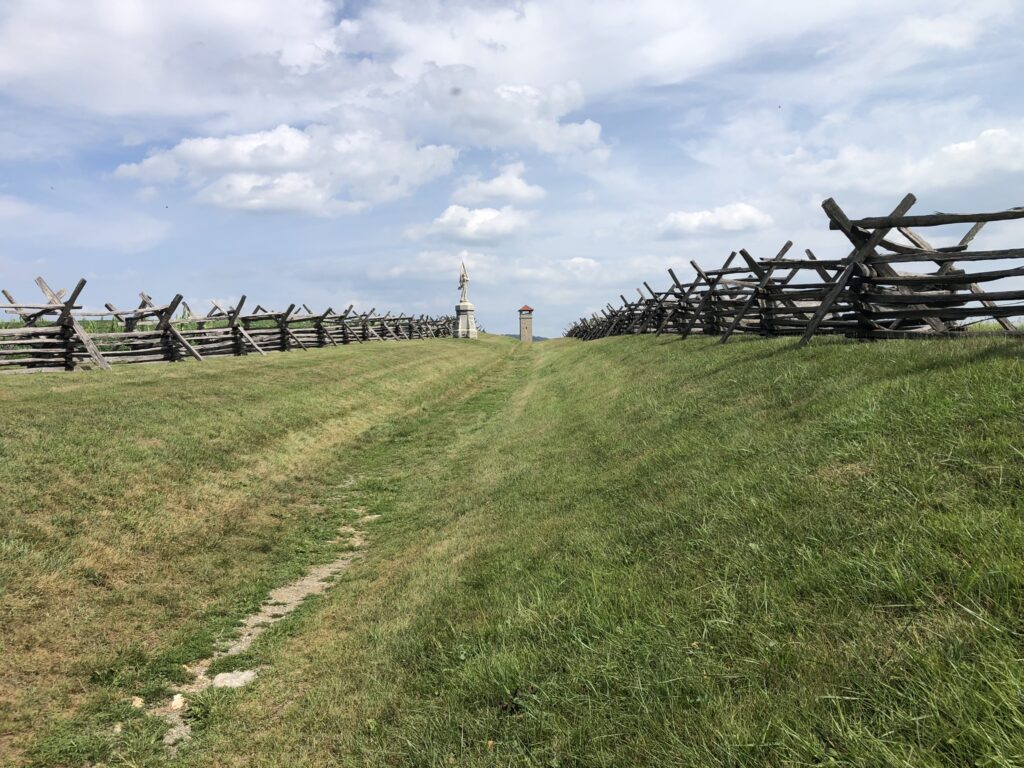
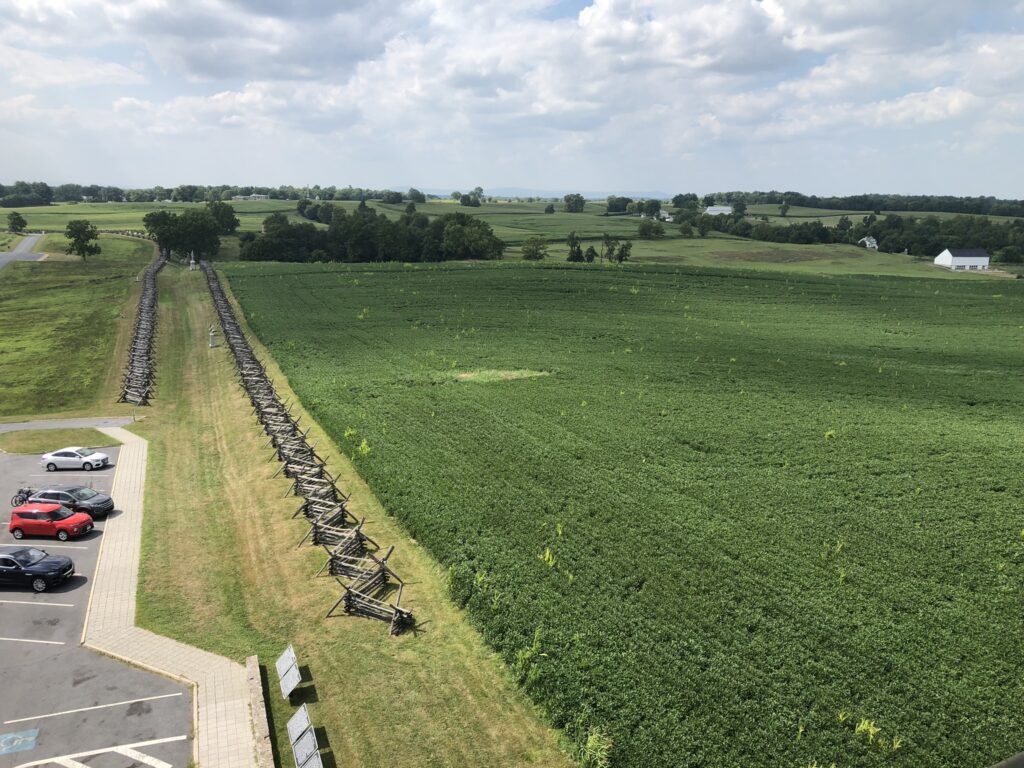
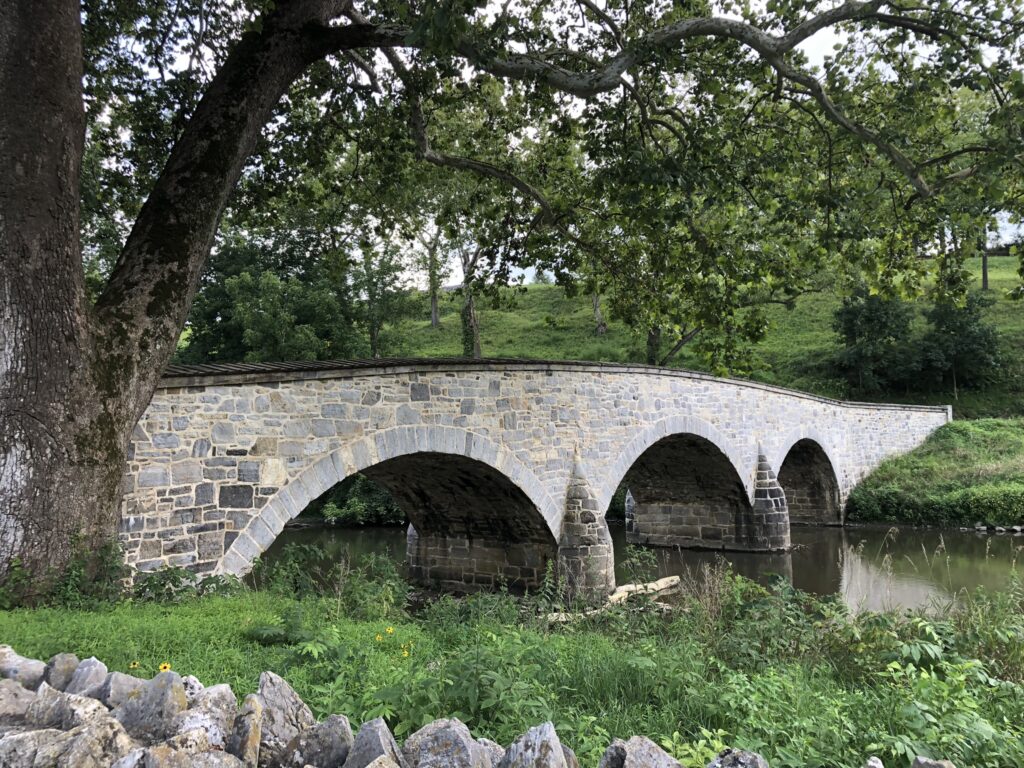
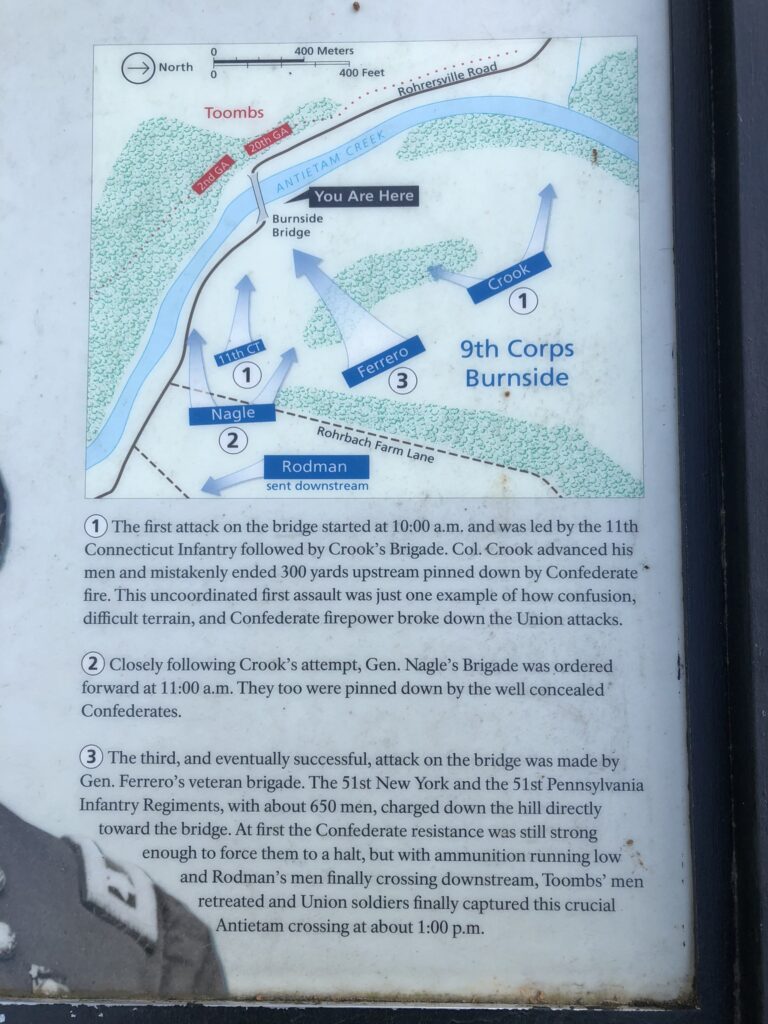
…and the battle maps explaining what happened.
During one of the talks we attended, the ranger made another point that reveals something important about this battle, and about our history generally. President Lincoln actually visited the battlefield after the battle, and visited not only the Union field hospital there, but the Confederate hospital as well. I asked the ranger that such a visit was surprising to me … why would Lincoln do such a thing? She responded that, yes, Lincoln hated slavery with a passion, and wanted it eradicated from the country, but ending slavery could wait. More than that he wanted to preserve the union. He knew that someday we would all have to live together, and his job was to make sure we could. So, when asked by a reporter why he visited the Confederate hospital, he said, “there are men of valor and virtue in there.”
It reminded me of the account of Appomattox where, after Lee’s surrender, General Grant allowed the Confederate soldiers to keep their arms and horses, knowing that they’d need them to live once they got home. And before everyone headed home, the Union and Confederate soldiers mingled together, renewed old friendships, and shared stories. Perhaps, if the war meant brother against brother, people had a sense that the end of the war meant the family could try to get back together again.
Try to imagine such decency, magnanimity, and fraternity today.
Anyway, unfortunately, we had rearranged our itinerary, leaving only one day to explore Antietam. In hindsight, it requires at least two days for the same reason Gettysburg requires more time … Lincoln was right: these places really are holy ground.
Next stop … Lake George, New York.
